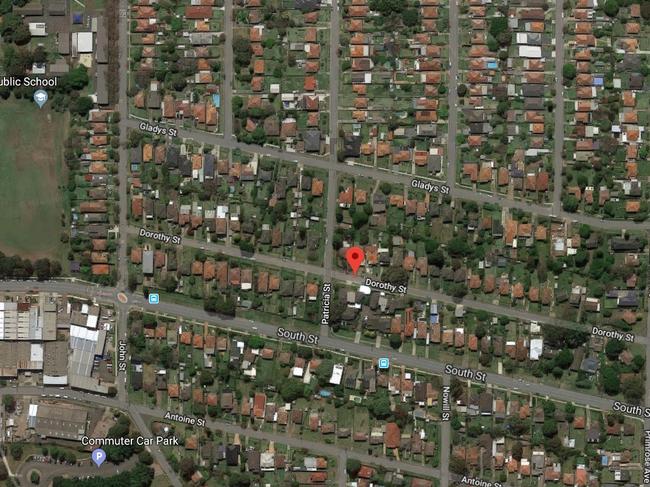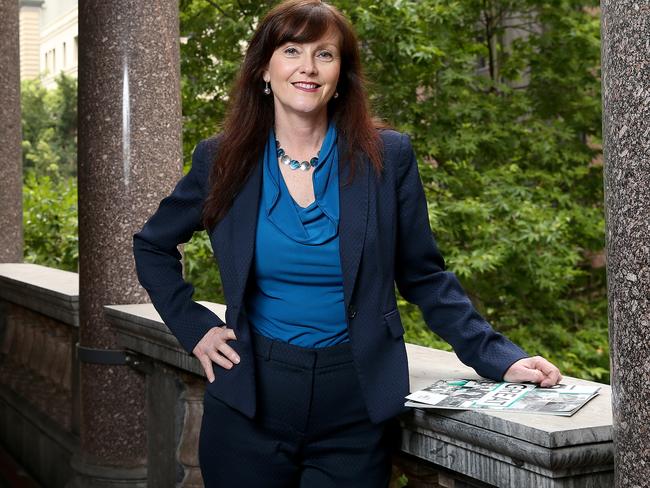Dorothy St, Rydalmere now the heart of Sydney’s population shift
There are no Harbour views. Nor does it feature on any tourist maps. But the geographical heart of Sydney’s booming population can be found in the middle of suburbia. MULTIMEDIA SPECIAL: FIND OUT WHERE AND TRACK THE MARCH.
NSW
Don't miss out on the headlines from NSW. Followed categories will be added to My News.
- How your suburb is feeling the population squeeze
- Sydney being overtaken by high-rise ‘monstrosities’
An average suburban street — complete with 1960s fibro houses and sprawling backyards — is now the absolute geographical heart of Sydney’s booming population.
Dorothy Street in Rydalmere doesn’t feature on any tourist maps but according to the Australian Bureau of Statistics (ABS) it represents the shortest distance between everyone living in Sydney.
By plotting 36 years of population growth, the ABS has been able to track the shifting heart of the city, with the result surprising urban planners by how little it has travelled over that time, given Sydney’s population increased by 1.8 million people.
“To only move 1.9km shows the power of the eastern seaboard and the inner west as desirable places to live,” Urban Taskforce CEO Chris Johnson told The Sunday Telegraph.
“It also demonstrates the power of the Sydney CBD as a jobs and cultural magnet leading to the densification of the inner ring.”

In 1981 the centre of Sydney was Newington Armoury — the place where the government stored tonnes of gun powder and ammunition.
In 1882 the government chose the site for the Royal Australian Naval Armament Depot because it was isolated from the population, then around 500,000 people.
MORE FROM BEN PIKE
HIGH RISE SCHOOL MAKES WAY FOR 600 APARTMENTS
REBEL WILSON IN DISPUTE WITH NEIGHBOURS OVER $900K RENO
Since then our demographic centre has moved north west, spending 1983 in the middle of the Parramatta River before reaching Silverwater Rd in 1992.
This push was driven by strong population growth in Castle Hill, Blacktown and later Cherrybrook, which got a post office in 1994 following an explosion of houses.
Post the 2000 Sydney Olympics it turned back to the east before bolting southwest as that region took off in 2011.
Andrew Howe, from the ABS’s Regional Population Unit, said the recent moves southwest have coincided with the announcement of Badgerys Creek Airport and the city being built around it.
“Over the past five years, there’s been a slight move southwest, reflecting a surge of population in areas such as the Camden and Liverpool council areas, which both increased by 26,000 between 2012 and 2017,” Mr Howe said.


“However, growth continues to be strong in the inner Sydney council area (up 43,000) and Parramatta (35,000).
“So the overall movement in the Sydney’s population centre however is really quite small — moving just 400m west over the past 25 years.
“This is much shorter than say Greater Melbourne, whose centre of population moved two kilometres west over this time.”
Both Mr Howe and Mr Johnson believe the population midpoint will continue its march southwest.
“I’d say it will cross the Parramatta River around 2021 and by 2036 we could very well see the centre of Sydney near Rosehill Racecourse,” Mr Johnson said.
“I suspect there will be a greater swing of the centre of population to the West over the next 36 years.”
While the population has gone from 3.28 million to 5.13 million between 1981 and 2017, Dorothy Street in Rydalmere has remained largely unchanged.
Father-of-three Danny Lo Castro said it was the most convenient spot for him, his wife Rosa and their three kids.
“I work in Campbelltown, my wife’s family are here, my family is here and one day we will rebuild our new house here; it’s the centre of everything,” Mr Lo Castro said.
“I don’t mind the growth in Sydney since we moved here in 2001. It’s part of living in a big city. If you want a quiet lifestyle move to Brisbane.”

When Mr Lo Castro stood on his front lawn and looked west as a 28-year-old, he could only see a few smallish buildings at Parramatta.
Now at 45, he sees the multi-storey towers of the western Sydney CBD, which has a greater economic output than the Adelaide CBD.
Meanwhile, the state’s leading property advocacy group has warned Sydney is being lumped with “sub-standard outcomes” because of a lack of experienced town planners at council level.
When it came to apartments, for example, Property Council of NSW executive director Jane Fitzgerald said junior planners were rigidly sticking to the rules on SEPP 65, the state government’s blueprint for apartment design.
Having a kitchen opposite a toilet is not the best outcome, but according to SEPP65 it is technically correct,” Ms Fitzgerald told The Sunday Telegraph.
“Not every site is perfect for development so planners need to respond to innovation from developers.
“Inexperienced planners might be gun shy with something that is not exactly compliant with SEPP65.”
The Land Release and Housing Supply in NSW inquiry also heard councils don’t have experienced planners available to update their local environment plans (LEPs).
These documents include guidelines for developer contributions to public infrastructure.

One developer was losing $485,000 a month on delays, fuelling calls to pouch town planners from interstate.
This delay means councils are tempted to make developers pay for infrastructure via voluntary planning agreements (VPAs) — a process which remains hidden from the public.
“They do not always see as clearly what is on offer, what is being discussed as would be the case through a transparent contributions plan that is on council’s books,” Planning Institute of Australia principal policy officer John Oatley told a NSW Parliamentary inquiry.
Planning Minister Anthony Roberts has asked the Department of Planning to reform VPAs because of their “opaqueness”.
Urban Taskforce CEO Chris Johnson said the delays end up increasing the price of housing for consumers.


